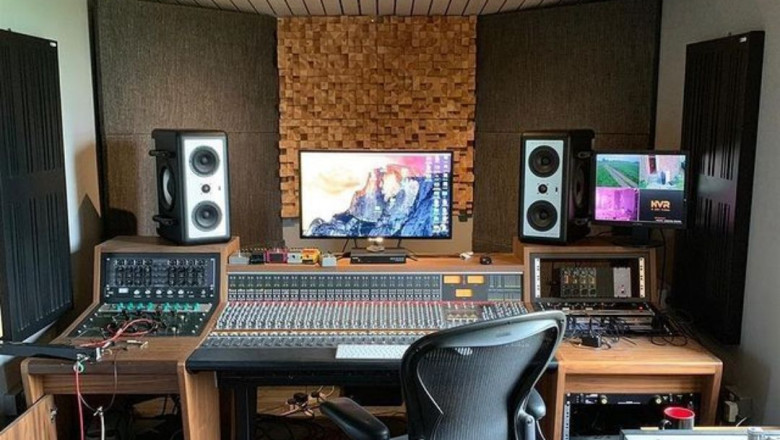views
In today’s digital world, music is made not just with instruments but also with computers, software, and creative tools. One of the most important tools in modern music-making is the DAW — short for Digital Audio Workstation. This powerful platform allows artists, producers, and engineers to record, edit, mix, and master their music all in one place.
Whether you're a beginner or someone planning to take up music production courses in India, understanding what a DAW can do is the first step in your journey. Let’s break it down and explore the tools that shape the music we hear every day.
What is a DAW?
A Digital Audio Workstation (DAW) is a software application used to create, record, and manipulate audio. Think of it as a virtual studio. Inside the DAW, you can record vocals, arrange beats, apply effects, and fine-tune every sound to perfection.
You don’t need a huge setup to start. A laptop, a good pair of headphones, and a DAW can open up a whole world of music possibilities. That’s why DAWs are at the heart of every home studio and professional recording space today.
Key Features of a DAW
Let’s explore the main features that make DAWs so essential:
Multitrack Recording
DAWs allow you to record multiple tracks — vocals, instruments, effects — separately. This makes editing much easier later on. You can fix timing, pitch, or remove unwanted noise without re-recording the entire song.
MIDI Sequencing
MIDI (Musical Instrument Digital Interface) lets you create music using virtual instruments. You don’t have to own a piano or drum kit — with MIDI, you can program those sounds using your keyboard or MIDI controller.
Audio Editing
From cutting and moving clips to adjusting volume and pitch, audio editing is easy and precise in a DAW. You can zoom in on tiny sections and fix them in seconds.
Sound Effects and Plugins
DAWs come with built-in plugins like reverb, delay, EQ, and compression. These help shape your sound and make it polished and professional.
Automation
Automation lets you control how certain parameters (like volume or effects) change over time in your song. This adds movement and emotion to the track.
Common Tools Inside a DAW
Every DAW, no matter the brand, includes some basic tools. Let’s look at what you’ll find inside:
Track Mixer: Similar to a physical mixer, it lets you control the levels, pan, and effects of each track.
Piano Roll: This is where MIDI notes are created and arranged. You can change the length, pitch, and velocity of each note.
Browser Panel: It helps you search and load audio files, samples, and instruments quickly.
Loop Library: A collection of pre-recorded loops like drum patterns, melodies, or sound effects that you can drag and drop into your song.
Transport Bar: The play, stop, record, rewind, and fast-forward buttons. This is your control center.
Why Learn to Use a DAW?
Learning to use a DAW can change the way you make music. It’s not just about recording; it’s about bringing your imagination to life. Whether you're composing for film, producing beats, recording vocals, or mixing for clients, a DAW gives you total control over your sound.
For those looking to go deeper, sound engineering courses in Bangalore offer hands-on training in DAWs along with studio practices, sound design, and mixing techniques. With practice and guidance, mastering these tools becomes a powerful skill in the music industry.
Tips for Getting Started
If you're new to DAWs, don’t worry. Here are a few tips to help you begin:
Start Simple – Begin with a free or beginner-friendly DAW. Learn the basics before moving to complex projects.
Watch and Learn – Explore tutorials and practice with real audio clips to understand how each tool works.
Practice Daily – The more you use the DAW, the more confident you’ll become. Try creating small tracks daily.
Experiment – Don’t be afraid to try new plugins, sounds, or effects. Discovery is part of the creative process.
Save Versions – Save different versions of your project as you go, so you don’t lose progress if something goes wrong.
The Journey from Hobby to Profession
Many famous producers and sound engineers started at home with a laptop and headphones. With dedication, learning, and the right tools, they built careers in music. DAWs helped them shape their ideas into radio hits, film scores, and viral tracks.
From studio setups and mic placements to mixing, mastering, and post-production, these courses are designed for those serious about sound.
Final Thoughts
The DAW is more than just a software. It’s your instrument, your recording space, and your creative lab all in one. It brings your musical ideas to life with flexibility and precision. Whether you dream of being a producer, an artist, or a sound engineer, learning the ins and outs of a DAW is your first big step.
Keep exploring, keep learning, and let the music guide you forward. The tools are at your fingertips — all you need is the passion to press "Record."













Comments
0 comment